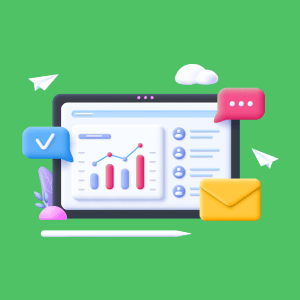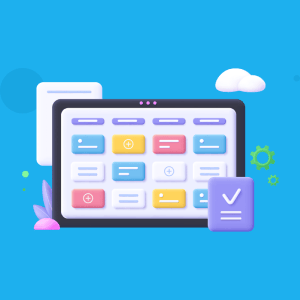Microlearning
Table of Contents
Today’s learners are busy and have short attention spans.
So, how can we keep them focused on training?
The answer comes in the form of microlearning, a learning method using diverse types of multimedia content that all have one thing in common—they’re super short.
Clocking in at 3–10 minutes per module, microlearning is fast, engaging, and boosts knowledge retention.
If you want to know how you can implement microlearning content into your learning and development strategy, keep reading this guide.
Now, let’s dive in and discover:
- What microlearning is
- Why it’s so important for learners and employers
- The benefits of microlearning
- Examples of microlearning to inspire you
- Tips on how to start a microlearning strategy in your organization
What is microlearning?
Microlearning is a way to deliver new information in small nuggets that normally only take 3–10 minutes to go over.
This way, learners take in the information in short bursts and a small amount of time.
Just because microlearning is short and fast doesn’t mean it’s not effective. In fact, it’s often the best way to achieve a learning objective.
This is because microlearning follows the concept called the forgetting curve. It’s actually quite an old concept introduced in the 1880s by Hermann Ebbinghaus, a German psychologist who was a pioneer in memory research.
So, what’s the forgetting curve? The more time that passes after we’ve learned something, the more knowledge retention we lose. About a month after a training session, we can forget up to 80% of the information.
Luckily, it’s possible to counter this effect with a method called spaced repetition. That’s exactly where microlearning courses come in.
Because they are short and quick, they keep refreshing our memory, leading to higher knowledge retention and engagement rates.
Microlearning can take on many forms, from microlearning videos to quizzes, infographics, and more. There’s no limit on what kind of content you can give learners in a microlearning format. The only rule is that it must be short.
Onto the next part of our guide, where we’ll discuss why microlearning is important for modern organizations and their employees.
Why is microlearning important for employees?
Let’s not beat around the bush. Smartphones have wreaked havoc on our collective attention spans.
And then, as if that wasn’t enough of a challenge for corporate training professionals, a typical employee is also really busy. So busy, in fact, that according to research, they have only 1% of their time set aside for learning.
We think you can already see the connection here—smartphones, short attention spans, not enough time for learning—microlearning is just what the doctor ordered.
Microlearning works because it fits well with the habits of learners. We all spend a lot of time scrolling on our phones. So, if learning content is in that interactive and responsive form, it will feel natural and engaging.
Of course, microlearning isn’t a good fit for every type of training. Some training is too important or too complex to condense into bite-sized lessons.
Where you can implement a microlearning strategy, you’ll be taking advantage of a cost-effective employee training method that boosts learner engagement and knowledge retention.
Now, let’s dive a lot deeper into the benefits of microlearning. That’s in the next part of our guide.
Four benefits of microlearning
Microlearning is short, sweet, and speedy. Because of this, learners can complete training anytime and anywhere, even from mobile devices. But what else does it offer?
Now we’ll look at the four main benefits that you can expect if you add microlearning to your learning strategy.
Benefit #1: Requires less time
No surprises here. Microlearning is all about speed. Most of the microlearning activities take only a few minutes, with some super small chunks even taking just one.
At a time when most employees are very busy with heavy workloads, it’s really useful. Remember the stat we quoted earlier—the average worker can only dedicate 1% of the time to learning.
Online learning is already a way to address this, especially on-demand learning that you can offer through a Learning Management System (LMS) and on smartphones.
But microlearning takes it a step further. Within only a couple of minutes, your employees can work on learning new skills or refreshing their knowledge.
Benefit #2: Supports learner autonomy
Microlearning fosters lifelong learning and professional development. Because learners can easily access and complete micro-courses in a short period of time, they allow for self-directed learning.
Your employees can easily browse the available learning experiences and choose to complete them based on their interests. This way, they’re aiding their professional development and staying up to date with the latest industry requirements.
This kind of approach to instructional design respects learner autonomy and puts the learners in the driving seat of their education. Adult learners appreciate this most as they don’t like to waste time on learning activities that they don’t find interesting or relevant.
Benefit #3: Increases engagement
By this point, you might have had enough of us mentioning learner engagement so much. But, it’s very clear from years of research and practice that student engagement is crucial for achieving successful learning outcomes.
Interestingly, 58% of employees say that they’d use their company’s LMS more often if the LMS broke the lessons down into smaller units.
Microlearning hits both of these criteria: it delivers bite-sized e-learning courses and drives engagement.
It’s not just about the units being small. Microlearning modules replicate the feeling of scrolling through social media, helping learners forget they are studying.
In addition, microlearning can easily be gamified with badges, points, and leaderboards. This increases learner engagement even more.
Benefit #4: Supports self-paced learning
Everyone has a different learning style, and microlearning lets people find the kind of learning that works best for them.
Microlearning modules are flexible, allowing learners to complete a module at their leisure. If a learner needs a refresher, they can always revisit it. And, since the content is small in size, it doesn’t take long to do so.
Learners can easily find the information they need to review without having to scroll or click through a full e-learning course.
This high flexibility boosts completion rates and makes training an opportunity to learn as opposed to an annoying workflow interruption.
In the next part of this guide, we’ve prepared a few examples of microlearning content to inspire you when you start creating your own.
Four microlearning examples to get inspired by
Microlearning content can take on many different forms. From short answers in FAQs to small games, it’s all microlearning as long as it’s bite-sized and quick to consume.
Here are a couple of examples, but keep in mind that this is not an exhaustive list. Your imagination is the limit when preparing microlearning content.
Example #1: Images
They say a picture is worth a thousand words, and nowhere is that more true than in microlearning.
Charts, graphs, illustrations, and even memes can be learning content. They’re easy and quick to consume and present information visually in a way that’s easier to understand.
No wonder marketers and instructional designers alike use infographics so much—90% of users said they find them helpful.
An infographic can display a lot of information in a condensed way. If you need to break down a complex topic into a series of easily digestible points, infographics are your best bet.
Example #2: Videos
In digital marketing circles, it’s already known that video is much more engaging than text.
Why should marketers be the only ones to benefit from the massive engagement that videos generate?
You can use videos in your microlearning strategy to deliver short and focused lessons. These can be either standalone nuggets offering one specific takeaway or part of a longer series of videos that help learners along a learning path.
Some examples of video content include:
- Whiteboard videos
- Interactive videos
- Text animations
- Explainer videos
Example #3: Quizzes
Everybody likes a nice quiz. You can incorporate quizzes into your microlearning strategy easily.
Many LMSs let you easily create and share them with your learners.
You’ll get the most out of quizzes if you use them to support other microlearning content. For example, you can create a quiz to follow a video or a podcast episode.
This way, you can boost knowledge retention by giving your learners a refresher. Additionally, the results of the quiz will help you determine if your employees meet their learning objectives.
If most people score really badly on the quiz, you probably need to tweak the learning experience. That’s usually a sign that the training material wasn’t engaging enough or that there are gaps in the content. You may also want to take another look at your quiz and ensure the questions are written clearly and are aligned with the training material.
Oh, and avoid trick questions, please. They are the fastest way to frustrate learners and kill engagement.
Example #4: Games
Gamification has been a huge trend in e-learning for a while. Games offer a sense of accomplishment to learners, even if the rewards are not tangible.
Quizzes that include points, achievements, badges, and other little rewards ripped from video games are examples of gamified microlearning.
The point of games is to provide an added layer or incentive to learners, even if it’s just bragging rights.
If you let learners compete for high scores, you’ll be enabling social learning too.
Some more examples of games you can use are:
- Polls
- Flashcards
- Matching exercises
- Drag and drop into order activities
- Clickable images (hotspots)
- Simulations
- Question and responses
In the next part of our guide, we want to give you a few quick tips to get you started with microlearning. So, let’s get to it.
Three tips to getting started with microlearning
Microlearning might sound like a fancy and academic concept, but in reality, it’s not. Remember the basic point—if it’s small and fast, it’s microlearning!
Onward to our three tips to get started.
Tip #1: Make knowledge mobile-friendly
Microlearning and mobile devices are a match made in heaven. Your employees already spend a lot of time on their phones.
With microlearning content, they can gain new information and skills anytime and any place.
Because microlearning is bite-sized, it’s very well suited for mobile learning.
Traditional e-learning courses require more attention and time, so learners often need to be chained to their desktop computers to get it done.
With microlearning modules delivered through a smartphone or tablet, you can eliminate this issue. With this newfound freedom, learners will immediately feel more engaged.
If your microlearning strategy doesn’t include making the entire thing mobile-friendly, it won’t be as effective.
The first step is to find an LMS with a native mobile app. This will enable you to deliver and track microlearning modules on any device.
Tip #2: Keep it to the point
This tip is kind of obvious, but we’re including it because it’s also very important. When making microlearning modules, always remember the KISS principle—keep it simple, stupid!
Workers these days have a lot of tasks, and the accelerated pace of modern life has made everyone impatient.
Including too many unnecessary details in your videos or infographics will make people switch off immediately.
So, make sure to keep the content short and sweet and focus on the most important bits. That will make it engaging and memorable.
Remember the golden rule: Every training module should have a learning goal. Keep that goal in mind and cut anything that isn’t directly related to it.
Tip #3: Support on-demand learning
Simply put, your microlearning content should be easily accessible and available wherever the point of need might be.
Don’t restrict access to microlearning content to just work computers. Let employees be able to sign in with their LMS accounts from anywhere and on any device.
This way, they learn from the micro-courses on their commute or during other free moments.
This is especially important for staff who work off-site, such as salespeople. They need immediate access to essential product training and information while out in the field.
On-demand learning enables learner autonomy too. Your learners get to pick when and where they’ll engage with the e-learning content, which gives a sense of autonomy and further facilitates self-directed learning.
Up next, it’s time to quickly recap what we know about microlearning.
Now over to you
Microlearning delivers new information and knowledge to learners in a fast, easily digestible, and engaging way.
Bite-sized learning can take many forms, from short copy to infographics and videos.
At its best, microlearning does many great things, such as:
- boosts learner engagement
- enables professional development through self-directed learning
- saves time and resources for organizations
If you’re interested in the different methods of learning and development and how they can benefit your company, head on over to our glossary.







